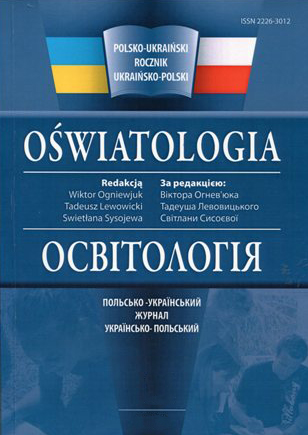THE BIGGEST MYSTERIES OF NATURE — THE UNIVERSE AND THE BRAIN
DOI:
https://doi.org/10.28925/2226-3012.2020.9.1Keywords:
Bing Bang’s theory, brain neurons, human brain, neuroeducation, Universe and brainAbstract
Vladyslav Blashyak, a professor at the Pavlo Vlodkovych Higher School in Plock, raises the question of one of the mysteries of the universe — the human brain. The author shares with the audience his latest research, provides classifications, emphasizes the rapid development of technical progress, which is most closely related to the structure of the brain.
In the article, which is the result of scientific research in recent decades, the professor points to the value of revolutionary inventions that play a huge role in the development of research, in the evolution of the universe and the brain. One such invention is the telescope. As for the brain, the introduction of research tools such as computed tomography (1972), MRI (magnetic resonance imaging), followed by EEG (electroencephalography), PET (positron emission tomography), MEG (magnetoencephalography) and more recent inventions for tracking of the eyes condition. Such discoveries in science have made the researcher wonder: does knowledge about the brain really allow us to make learning more effective?
The scientist provides a classification of children according to their age psychological periods and the work of neurons in the brain. It is indicated that at the age of 4–5 years the network of neurons is best developed. The period of a rebellious teenager is characterized by the maturation of the brain, or the processes of strengthening between neurons. The author speaks about the importance of knowledge in the achievements of neuroeducation in order to understand the strange and most unexpected statements of our students. The article calls for monitoring the results of the latest research on the universe and on our brains. The author is convinced that in the process of teaching educators are able to make certain changes in the brains of their students.
References
Błasiak, W. (2019). Największe zagadki natury — wszechświat i mózg (Wykład Inauguracyjny 2019). Szkoła Wyższa im. Pawła Włodkowica. https://www.wlodkowic.pl/3-news/newsflash/878-xxviii- inauguracja.html (pol).
Darwin, K. (1859). O powstawaniu gatunków. Szwajcaria (pol).
Dickinson, E. (1990). 100 wierszy: Emily Dickinson. Arka (pol).
Kopernik, M. (1566). De Revolutionibus orbium coelestium, Libri VI. Henricpetrina (łacina).
Published
How to Cite
Issue
Section
License
Copyright (c) 2020 Владислав Блашяк

This work is licensed under a Creative Commons Attribution-NonCommercial 3.0 Unported License.
Content Licensing: Creative Commons Attribution Non-Commercial
The author allows:
- Share — copy and redistribute the material in any medium or format
- Adapt — remix, transform, and build upon the material
Under the following terms:
-
Attribution — You must give appropriate credit, provide a link to the license, and indicate if changes were made. You may do so in any reasonable manner, but not in any way that suggests the licensor endorses you or your use.
-
NonCommercial — You may not use the material for commercial purposes.
The authors reserve the right to authorship of the work and pass the first publication right of this work to the journal under the terms of a Creative Commons Attribution License, which allows others to freely distribute the published research with the obligatory reference to the authors of the original work and the first publication of the work in this journal.
The authors have the right to conclude separate supplement agreements that relate to non-exclusive work distribution in the form in which it has been published by the journal (for example, to upload the work to the online storage of the journal or publish it as part of a monograph), provided that the reference to the first publication of the work in this journal is included.





